monthly
Type of resources
Available actions
Topics
Keywords
Contact for the resource
Provided by
Years
Formats
Representation types
Update frequencies
Service types
Scale
Resolution
-
Data were collected by the Chilbolton Facility for Atmospheric and Radio Research (CFARR) Infra-Red Radiometer from 10th of May 2001 to the present at Chilbolton, Hampshire. The dataset contains measurements for both sky and surface emitted infrared radiation, from 4.5 to 42 µm.
-
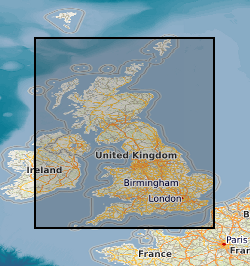
This layer of the map based index (GeoIndex) shows areas covered by explanatory sheet Memoirs, along with basic information such as memoir title and publication date. The memoirs themselves,compiled by BGS geologists, date from the late 1890s to present day and provide a comprehensive and detailed account of all aspects of the geology of the areas covered by the 1:50,000 (and 1:63,360) map series. Some memoirs may cover more than one geological sheet area and a few cover key geological themes (eg Jurassic rocks) across a large region. Sheet Descriptions are fully colour-illustrated, shortened accounts of the geology that are available for some of the newer published geological sheets.
-
Atmospheric temperature observations from the Armagh Observatory, founded in 1790 by Archbishop Richard Robinson. As well as astronomical observations various meteorological parameters have been recorded since 1794. If users wish to find data from other areas of work undertaken by the observatory they should visit the Armagh Observatory website. This dataset contains monthly measurements and summaries of air temperature, air pressure, rainfall, wind speed, wind direction, total cloud and hours of sunshine from an automatic weather station.
-
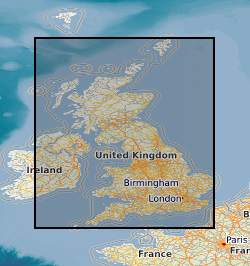
The map shows the location and line-identifiers of reflection seismic profiles acquired by the former National Coal Board and British Coal during their exploration for coal in the UK. Ownership of UK coal exploration data was transferred to the Coal Authority following privatisation of the UK coal industry. The Coal Authority have appointed the British Geological Survey as custodian of this important national geological data archive. These data are, in general, publicly available; however, access to data within active mining licences is restricted in that it requires the consent of the mining licensee. The Coal Authority data archive includes hardcopy and digital data for the reflection seismic profiles, such as film and paper prints, original field tapes, demultiplexed data, processed stacked data, navigation (location) data and observers' and surveyors' acquisition reports. But please note that not all data types are available for all profiles. The BGS will be pleased to provide information on data availability for named profiles or within specified geographic areas, together with cost estimates and options for supplying copies.
-
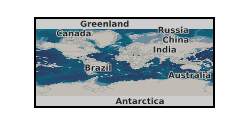
The British Geological Survey (BGS) in collaboration with the Environment Agency (EA) has developed a web-based tool that provides an indication of whether suitable conditions exist in a given area for Open-loop Ground Source Heat Pumps (GSHP). The tool is developed within a GIS and maps the potential for open-loop GSHP installations (heating/cooling output >100kW) in England and Wales at the 1:250,000 scale. Data layers from this tool are available to view in this service. The data in this service is available to access for free on the basis it is only used for your personal, teaching, and research purposes provided all are non-commercial in nature as described on http://www.bgs.ac.uk/about/copyright/non_commercial_use.html. Where commercial use is required, licences are available from the British Geological Survey (BGS). Your use of any information provided by the BGS is at your own risk. BGS gives no warranty, condition or representation as to the quality, accuracy or completeness of the information or its suitability for any use or purpose. All implied conditions relating to the quality or suitability of the information, and all liabilities arising from the supply of the information (including any liability arising in negligence) are excluded to the fullest extent permitted by law.
-
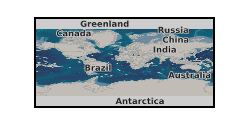
The database contains scanned photographs (at 1016dpi) of the UK and various locations around the world. Some are single band (black&white) others are 3 band colour. The images are stored in various formats on various types of magnetic media: .COT raw scans can only be used on the Intergraph ImageStation; .JPG (Intergraph format); .TIF. Processed scans may also be saved as stereomodels (with project data) and as orthophotographs. Mono coverage for most of the UK and we are constantly acquiring stereo data. Data is updated when unscanned areas are required by projects.
-
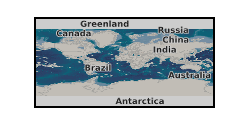
BGS soil property data layers including parent material, soil texture, group, grain size, thickness and European Soil Bureau description. These data are delivered under the terms of the Open Government Licence (http://www.nationalarchives.gov.uk/doc/open-government-licence/), subject to the following acknowledgement accompanying the reproduced BGS materials: Contains British Geological Survey materials copyright NERC [year]. Contact us if you create something new and innovative that could benefit others usingbgsdata@bgs.ac.uk.
-
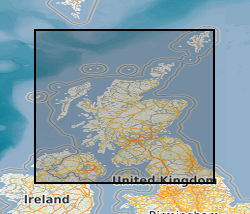
The Land Survey Archives consists of records of the Geological Survey in Scotland for permanent retention dating from 1860s onwards. The collection comprises geologists' field notebooks, miscellaneous field observations and reports, historical and biographical material, correspondence files, photographs, etc. Includes archival material deposited by outside individuals and organisations, eg. NCB (National Coal Board) Bore Book Collection. Survey archival material for Northern England will be incorporated. Some 380 accessions held amounting to over 7,000 items. Indexed at collection level in Land Survey Record Index (LSRI). Plans abstracted and held separately in Land Survey Plans Collection.
-
This dataset contains ERA5 surface level analysis parameter data. ERA5 is the 5th generation reanalysis project from the European Centre for Medium-Range Weather Forecasts (ECWMF) - see linked documentation for further details. This dataset contains a limited selection of all available variables and have been converted to netCDF from the original GRIB files held on the ECMWF system. They have also been translated onto a regular latitude-longitude grid during the extraction process from the ECMWF holdings. For a fuller set of variables please see the linked Copernicus Data Store (CDS) data tool, linked to from this record. Model level analysis and surface forecast data to complement this dataset are also available. Data from a 10 member ensemble, run at lower spatial and temporal resolution, were also produced to provide an uncertainty estimate for the output from the single high resolution (hourly output at 31 km grid spacing) 'HRES' realisation producing data in this dataset. The ERA5 global atmospheric reanalysis of the covers 1979 to 2 months behind the present month. This follows on from the ERA-15, ERA-40 rand ERA-interim re-analysis projects. An initial release of ERA5 data (ERA5t) is made roughly 5 days behind the present date. These will be subsequently reviewed ahead of being released by ECMWF as quality assured data within 3 months. CEDA holds a 6 month rolling copy of the latest ERA5t data. See related datasets linked to from this record. However, for the period 2000-2006 the initial ERA5 release was found to suffer from stratospheric temperature biases and so new runs to address this issue were performed resulting in the ERA5.1 release (see linked datasets). Note, though, that Simmons et al. 2020 (technical memo 859) report that "ERA5.1 is very close to ERA5 in the lower and middle troposphere." but users of data from this period should read the technical memo 859 for further details.
-
This dataset contains ERA5 model level analysis parameter data. ERA5 is the 5th generation reanalysis project from the European Centre for Medium-Range Weather Forecasts (ECWMF) - see linked documentation for further details. This dataset contains a limited selection of all available variables and have been converted to netCDF from the original GRIB files held on the ECMWF system. They have also been translated onto a regular latitude-longitude grid during the extraction process from the ECMWF holdings. For a fuller set of variables please see the linked Copernicus Data Store (CDS) data tool, linked to from this record. Surface level analysis and forecast data to complement this dataset are also available. Data from a 10 member ensemble, run at lower spatial and temporal resolution, were also produced to provide an uncertainty estimate for the output from the single high resolution (hourly output at 31 km grid spacing) 'HRES' realisation producing data in this dataset. The ERA5 global atmospheric reanalysis of the covers 1979 to 2 months behind the present month. This follows on from the ERA-15, ERA-40 rand ERA-interim re-analysis projects. An initial release of ERA5 data (ERA5t) is made roughly 5 days behind the present date. These will be subsequently reviewed ahead of being released by ECMWF as quality assured data within 3 months. CEDA holds a 6 month rolling copy of the latest ERA5t data. See related datasets linked to from this record. However, for the period 2000-2006 the initial ERA5 release was found to suffer from stratospheric temperature biases and so new runs to address this issue were performed resulting in the ERA5.1 release (see linked datasets). Note, though, that Simmons et al. 2020 (technical memo 859) report that "ERA5.1 is very close to ERA5 in the lower and middle troposphere." but users of data from this period should read the technical memo 859 for further details.
 NERC Data Catalogue Service
NERC Data Catalogue Service